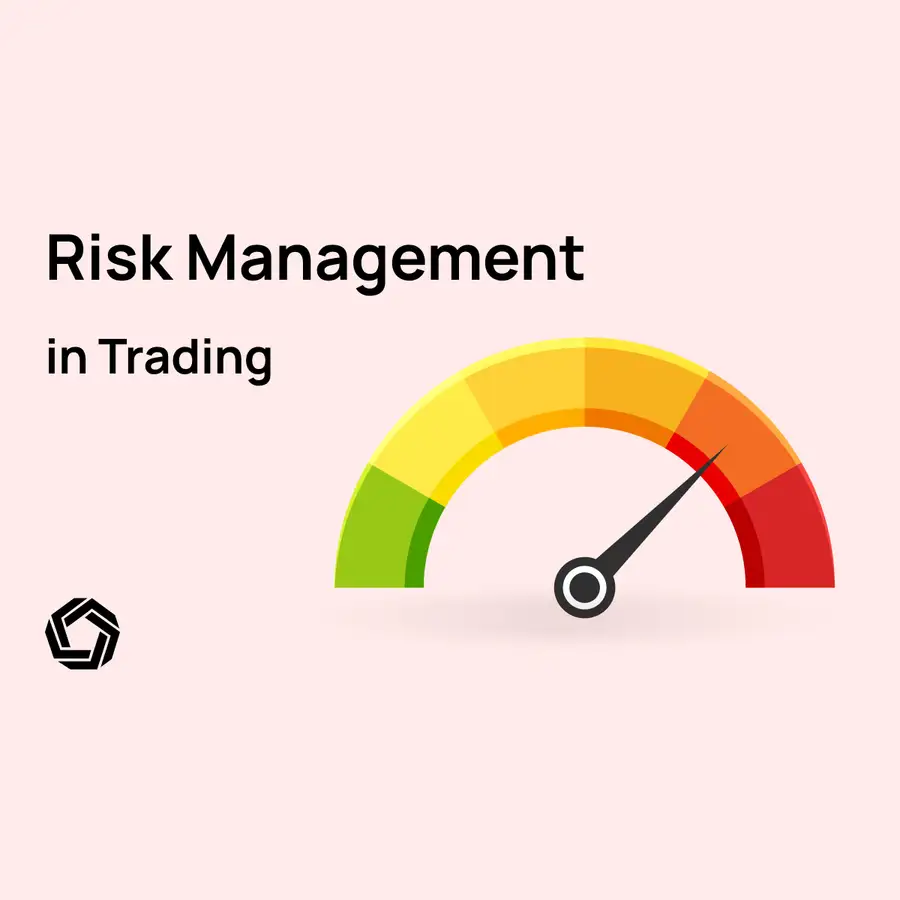Risk Management in Trading

What Is Risk Management?
Risk management is essential for every successful trader. Trading involves taking calculated risks, and it's not uncommon to experience losses. Effective risk management involves identifying, assessing, and mitigating potential risks associated with trading activities.
Why Is Risk Management Important?
Risk management is critical in trading because it helps traders protect their capital, minimize losses, and maximize returns. Effective risk management allows traders to identify and mitigate potential risks associated with their trading activities, such as market volatility, unexpected events, and trading psychology.
Risk Management Strategies
There are several strategies that traders can employ to manage their trading risks.
Portfolio Diversification
Portfolio diversification involves spreading investments across different asset classes, sectors, and geographies to minimize the impact of individual asset losses and volatility on the overall portfolio. The goal is to reduce the overall risk by creating a balance between high-risk and low-risk investments.
Diversification works by creating a mix of assets that have a low correlation amongst the various assets. This means that when one asset is performing poorly, the other assets in the portfolio can offset the losses, reducing the overall impact on the portfolio. For example, if a portfolio consists of only tech stocks, the portfolio would be highly exposed to market volatility in the tech industry. However, if the portfolio is diversified across different sectors, such as tech, healthcare, and energy, any losses in the tech sector may be offset by gains in other sectors.
Portfolio diversification can be achieved by investing in a mix of asset classes such as stocks, bonds, commodities, real estate, and cash. Within each asset class, diversification can also be achieved by investing in different companies, sectors, and geographies.
Hedging
Hedging involves taking a position in an asset or security to reduce the risk of losses from adverse price movements in another asset or security. The goal of hedging is not to profit from the trade but to protect against potential losses.
There are several types of hedging strategies. One common hedging strategy is to use options. An option is a contract that gives the holder the right, but not the obligation, to buy or sell an asset at a predetermined price and time. Traders can use options to protect their portfolio against potential losses by buying put options. Put options give investors the right to sell an asset at a predetermined price. Call options give investors the right to buy an asset at a predetermined price.
Another common hedging strategy is to use futures contracts. A futures contract is an agreement to buy or sell an asset at a predetermined price and time. Traders use futures contracts to hedge against potential losses by taking a position in the opposite direction of their current position. For example, if a trader has a long position in a stock, they can sell futures contracts to offset the risk of a decline in the stock price.
Hedging can also be achieved by using correlation-based strategies. This involves taking positions in assets that have a negative correlation with each other. For example, if a trader has a long position in a stock that is highly correlated with the overall market, they can take a short position in an asset that is negatively correlated with the market to hedge against potential losses.
Limiting Trading Capital
Limiting trading capital involves setting a maximum amount of capital that a trader is willing to risk on each trade or in total. The goal is to protect the trader's capital and prevent the trader from losing more than they can afford.
Position sizing is one common technique for limiting trading capital. This technique is centered around determining the proper amount of capital to allocate to each trade based on the trader's trading account size and risk tolerance. A general rule of thumb is to risk no greater than about 1-2% of the trading account on any single trade. By limiting the amount of capital allocated to each trade, traders can limit their potential losses and protect their trading capital.
Traders can also limit their trading capital by setting a maximum drawdown limit. A drawdown is the peak-to-trough decline in a trader's account value. By setting a maximum drawdown limit, traders can limit their potential losses to a predetermined amount, which can help protect their trading capital.
Avoiding Slippage
The difference between a trade's expected price and its actual price is known as slippage. It occurs when there is a delay between the time the order is placed and the time that it is executed or when the market moves rapidly in the interim period. Slippage can result in higher transaction costs and can adversely affect trading performance. Therefore, traders can use several risk management strategies to avoid or minimize slippage.
One common strategy for avoiding slippage is to use limit orders. By using limit orders, traders can ensure that their trades are executed at the targeted price and avoid slippage. However, limit orders may not be filled if the market moves away from the specified price.
Another strategy for avoiding slippage is to use market orders. A market order is an order placed with a broker to buy or sell a security at the prevailing market price. Market orders are executed immediately, which can help avoid slippage. However, market orders may be subject to price fluctuations, which can result in a higher transaction cost.
Slippage can also be avoided by monitoring the market and adjusting orders accordingly. In this way, traders can ensure that their trades are executed at the best possible price and minimize slippage. Additionally, traders can avoid trading during times of high volatility or low liquidity, which can increase the risk of slippage.
Using Proper Position Sizing
Position sizing involves determining the appropriate amount of capital to allocate to each trade. Proper position sizing helps manage risk and protect trading capital.
To determine the appropriate position size, traders should consider their risk tolerance, trading objectives, and the size of their trading account. A general rule of thumb is to risk no more than 1-2% of the trading account on any single trade. For example, if a trader has a $100,000 trading account, they should risk no more than $1,000-$2,000 on any single trade.
Traders can use several methods to determine the appropriate position size for each trade.
For example, the fixed dollar amount method involves allocating a fixed dollar amount to each trade, regardless of the size of the trading account. For example, a trader may decide to allocate $1,000 to each trade.
The fixed percentage of the trading account method involves allocating a fixed percentage of the trading account to each trade. For example, a trader may decide to risk 1% of their trading account on each trade.
And the Kelly Criterion calculates the percentage of trading capital that should be allocated to the trade in order to maximize long-term returns while minimizing risk. The Kelly Criterion can be a useful tool for traders to determine the appropriate position size for a trade, but it can be more complex to calculate than other position sizing methods.
Using Stops to Limit Losses
Using stops to limit losses involves placing an order with a broker to automatically sell a security if it reaches a specified price. Stops are commonly used to limit losses on a trade and protect trading capital.
There are several types of stops that traders can use.
For example, a market stop is an order to sell a security at the prevailing market price once the specified stop price is reached. Market stops are executed immediately and can help limit losses. However, market stops may be subject to slippage, which can result in a higher transaction cost.
A limit stop is an order to sell a security at a specified price or a better price once the stop price is reached. Limit stops can help ensure that the trade is executed at the specified price or better and can help limit losses. However, limit stops may not be filled if the market moves away from the specified price.
A trailing stop is an order to sell a security if the price drops by a specified amount or percentage from the highest price since the order was placed. Trailing stops can help protect profits by allowing the trader to capture gains while limiting potential losses. Trailing stops can be particularly useful in trending markets where prices may continue to rise or fall for an extended period.
Conclusion
By implementing strategies such as portfolio diversification, hedging, proper position sizing, stops, and slippage avoidance, traders can limit their losses and protect their trading capital. It's essential for traders to prioritize risk management in their trading activities and to regularly evaluate and adjust their strategies as necessary. Ultimately, successful trading requires a combination of skill, experience, and discipline, and a commitment to risk management is an important part of this equation.

Disclaimer: All investments involve risk, and the past performance of a security, industry, sector, market, financial product, trading strategy, or individual’s trading does not guarantee future results or returns. Investors are fully responsible for any investment decisions they make. Such decisions should be based solely on an evaluation of their financial circumstances, investment objectives, risk tolerance, and liquidity needs. This post does not constitute investment advice.

Painless trading for everyone
Hundreds of markets all in one place - Apple, Bitcoin, Gold, Watches, NFTs, Sneakers and so much more.

Painless trading for everyone
Hundreds of markets all in one place - Apple, Bitcoin, Gold, Watches, NFTs, Sneakers and so much more.









